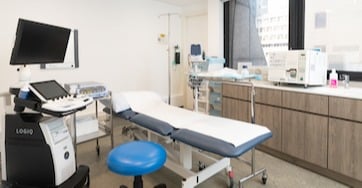Reviewed by Dr. Winnie Chui
Heartburn, a common and often uncomfortable condition, affects many individuals worldwide. Characterised by a burning sensation in the chest, heartburn occurs when stomach acid flows back into the esophagus, irritating the lining. This reflux can be triggered by various factors, such as certain foods, alcohol consumption, obesity, and even stress. While occasional heartburn is normal, frequent episodes may indicate an underlying health condition requiring medical attention.
In this blog, we will discuss the possible causes of heartburn when presented in certain locations of the chest area and explore the health conditions that may be associated with them. By understanding the link between the location of your heartburn and the diseases that may be related to it can help you recognise when it is time to seek medical intervention.
Causes of Heartburn
Heartburn may be more noticeable in the following situations:
- After a rich, acidic or spicy meal
- Having a late dinner
- Bending over
- Lying down
Symptoms of Heartburn
Distinguishing between heartburn and other types of chest pain can sometimes be challenging. If you are unsure about the type of pain you are experiencing, it is advisable to consult a doctor. Additionally, paying attention to accompanying symptoms can help differentiate heartburn from a heart attack or other esophageal disorders. Common symptoms associated with acid reflux-induced heartburn include:
- Burping
- Sour taste in the mouth
- Nausea
- Regurgitation of food
- Stomach bloating and overfullness
- Hiccups
- Chronic cough
- Worsening asthma
- Sore throat
- Laryngitis
- Difficulty swallowing or the sensation of a lump in the throat
- Chest pain resembling angina (noncardiac chest pain)
Heartburn in the Upper Chest
Heartburn in the upper chest could be associated with conditions such as gastroesophageal reflux disease (GERD) or a hiatal hernia.- Gastroesophageal reflux disease (GERD): GERD is a chronic form of acid reflux that affects approximately 20% of the adult population1. This condition is caused by a weak or damaged lower esophageal sphincter (LES), which is responsible for preventing stomach acid from flowing back into the esophagus. When heartburn is experienced primarily in the upper chest, it may be indicative of GERD. Other symptoms of GERD can include regurgitation, difficulty swallowing, chronic cough, and hoarseness.
- Hiatal hernia: A hiatal hernia occurs when part of the stomach pushes through the diaphragm into the chest cavity. This abnormality can lead to increased pressure on the LES, causing it to weaken and allow stomach acid to reflux into the esophagus. Heartburn in the upper chest, along with other symptoms such as belching, difficulty swallowing, and chest pain, may suggest the presence of a hiatal hernia.
Heartburn in the Middle Chest
Heartburn experienced in the middle chest area can be linked to conditions such as peptic ulcers and gastritis.- Peptic ulcer: Peptic ulcers are open sores that develop on the stomach lining or the upper part of the small intestine (duodenum). They are often caused by Helicobacter pylori (H. pylori) or long-term use of certain medications (e.g., nonsteroidal anti-inflammatory drugs and oral corticosteroids). A peptic ulcer can cause heartburn-like pain in the middle chest area, along with other symptoms such as bloating, nausea, and fullness after eating. The pain may worsen during the night or on an empty stomach. It is vital to consult a healthcare professional immediately if you suspect a peptic ulcer, as untreated ulcers can lead to serious complications, including internal bleeding or stomach perforation.
- Gastritis: Gastritis is an inflammation of the stomach lining. Various factors, including bacterial infections, excessive alcohol consumption, and certain medications can trigger it. Gastritis can cause heartburn-like pain in the middle chest area and other symptoms like indigestion, loss of appetite, and nausea. In some cases, gastritis may lead to stomach ulcers or an increased risk of stomach cancer. Tests such as endoscopy or breath tests may be ordered by your doctor and treatment options may include medications to reduce stomach acid and antibiotics to treat H. pylori infection.
Heartburn in the Lower Chest
When heartburn is felt in the lower chest area, it could be related to conditions like functional dyspepsia or gastroparesis.
Functional dyspepsia: Also known as non-ulcer dyspepsia or indigestion, functional dyspepsia is a chronic disorder characterised by discomfort or pain in the upper abdomen without an identifiable cause. This condition can cause heartburn-like pain in the lower chest area, along with other symptoms such as bloating, early satiety (feeling full after eating a small amount), and nausea. Although the exact cause of functional dyspepsia is unknown, factors such as stress, irregular eating habits, certain medications, and irritable bowel syndrome may contribute to its development. If there is no evidence of a structural or biochemical disease after investigations and symptoms have persisted for more than 3 months, then you may be diagnosed with this. Treatment for functional dyspepsia often includes lifestyle modifications, such as eating smaller meals, avoiding trigger foods, managing stress, and taking medications to reduce stomach acid or promote gastric emptying.
Gastroparesis: Gastroparesis is a condition in which the stomach muscles do not function properly, leading to delayed gastric emptying and poor digestion of food. This disorder can cause heartburn-like pain in the lower chest area, as well as other symptoms like nausea, vomiting, abdominal pain, and weight loss. Gastroparesis can be caused by various factors, including diabetes, nerve damage, and certain medications. Treatment for gastroparesis may involve dietary changes (e.g., consuming smaller and more frequent meals), medications to stimulate stomach contractions, or, in severe cases, surgical interventions may be needed.
General Information About Heartburn
What to Drink for Heartburn Relief
When managing heartburn, selecting appropriate beverages can significantly ease symptoms. Herbal teas such as ginger and chamomile tea are beneficial as they help reduce inflammation and soothe the digestive tract. Non-citrus juices like apple or carrot juice are gentle on the stomach, providing necessary fluids without aggravating symptoms. It's best to avoid caffeinated beverages, carbonated drinks, and acidic juices such as orange and tomato, as these can exacerbate heartburn. Drinking a glass of water with a teaspoon of baking soda can neutralise stomach acid and offer temporary relief. However, it should be used sparingly due to its high sodium content.
How Long Does Heartburn Last?
Heartburn duration can vary widely, from a few minutes to several hours, depending on the cause and severity. Occasional heartburn is common and usually resolves with over-the-counter medications and lifestyle adjustments. However, if heartburn is frequent and prolonged, it may indicate acid-peptic ulcer disease or gastroesophageal reflux disease (GERD), which requires medical assessment. Managing dietary habits, such as avoiding late and heavy meals and reducing intake of trigger foods, can help minimise the duration and frequency of heartburn episodes.
Home Remedies for Heartburn
Several effective home remedies can alleviate heartburn. Chewing sugar-free gum after meals can increase saliva production, helping to reduce acid levels in the oesophagus. Eating a few almonds post-meal can also neutralise stomach acid and provide relief. Another helpful strategy is to elevate the head of your bed by six to eight inches (which is about 30 to 45 degrees of angulation from the bed surface), preventing acid from travelling back into the oesophagus while you sleep. Additionally, maintaining a healthy diet and weight, avoiding smoking, and reducing stress through techniques such as yoga or meditation can significantly help manage heartburn symptoms.
When to Seek Medical Help
While occasional heartburn is common and generally not a cause for concern, it's essential to recognize when your symptoms might be indicative of a more serious condition. Seek medical help if you experience any of the following symptoms:
- Heartburn that persists for more than 4 weeks despite over-the-counter treatments or lifestyle modifications
- Severe, frequent, or worsening heartburn
- Difficulty swallowing or persistent choking sensation
- Unexplained weight loss or loss of appetite
- Vomiting blood or passing black, tarry stools (signs of gastrointestinal bleeding)
- Chest pain accompanied by shortness of breath, cold sweats, or pain radiating to the jaw, neck, or arm (potential signs of a heart attack)
It is crucial to consult a healthcare professional if you have concerns about your heartburn symptoms. Early intervention can help prevent complications and ensure proper management of any underlying conditions.
Prevention and Management
To prevent and manage heartburn, you should consider implementing the following lifestyle changes and treatments:- Maintain a healthy weight: Excess weight, especially around the abdomen, can pressure the stomach and increase the risk of acid reflux.
- Adjust your diet: Avoid common trigger foods, such as spicy or fatty meals, chocolate, caffeine, and alcohol. Opt for smaller, more frequent meals instead of large, heavy ones.
- Don't lie down immediately after eating: Wait at least two to three hours before lying down or going to bed, as this can help prevent stomach acid from flowing back into the esophagus.
- Elevate the head of your bed: Raising the head of your bed by 6 to 8 inches can help prevent acid reflux during sleep.
- Quit smoking: Smoking can weaken the LES and contribute to acid reflux.
- Manage stress: Stress can exacerbate heartburn symptoms, so practicing stress management techniques like deep breathing, meditation, or yoga may be beneficial.
Understanding the location in the chest area of your heartburn and their potential links to various health conditions is crucial for recognising when medical intervention may be necessary. By being proactive about your digestive health and seeking medical help for persistent or severe heartburn, you can ensure timely diagnosis and appropriate treatment. Remember that lifestyle changes, such as maintaining a healthy weight, adjusting your diet, and managing stress, can significantly prevent and manage heartburn symptoms. Always consult your doctor for personalised advice and care.
References
-
Katz, P. O., Gerson, L. B., & Vela, M. F. (2013). Guidelines for the diagnosis and management of gastroesophageal reflux disease. The American Journal of Gastroenterology, 108(3), 308-328. https://doi.org/10.1038/ajg.2012.44
-
Malfertheiner, P., Megraud, F., O'Morain, C. A., Gisbert, J. P., Kuipers, E. J., Axon, A. T., ... & Gasbarrini, A. (2017). Management of Helicobacter pylori infection—the Maastricht V/Florence Consensus Report. Gut, 66(1), 6-30. https://doi.org/10.1136/gutjnl-2016-31228
-
Tack, J., & Talley, N. J. (2013). Functional dyspepsia—symptoms, definitions and validity of the Rome III criteria. Nature Reviews Gastroenterology & Hepatology, 10(3), 134-141. https://doi.org/10.1038/nrgastro.2013.1
-
Camilleri, M., & Chedid, V. (2014). Gastroparesis. In Gastroenterology Clinics of North America (Vol. 43, No. 3, pp. 417-433). W.B. Saunders. https://doi.org/10.1016/j.gtc.2014.05.01
-
Ness-Jensen, E., Hveem, K., El-Serag, H., & Lagergren, J. (2016). Lifestyle intervention in gastroesophageal reflux disease. Clinical Gastroenterology and Hepatology, 14(2), 175-182.e1-3. https://doi.org/10.1016/j.cgh.2015.06.037
 Central General Practice
Central General Practice
 Repulse Bay
Repulse Bay
 Clearwater Bay
Clearwater Bay
 BodyWorX Clinic
BodyWorX Clinic
 Central Specialist Clinic
Central Specialist Clinic
 MindWorX Clinic
MindWorX Clinic
 Partner Clinics
Partner Clinics
 Family Clinic
Family Clinic
 OT&P Annerley Midwives Clinic
OT&P Annerley Midwives Clinic





